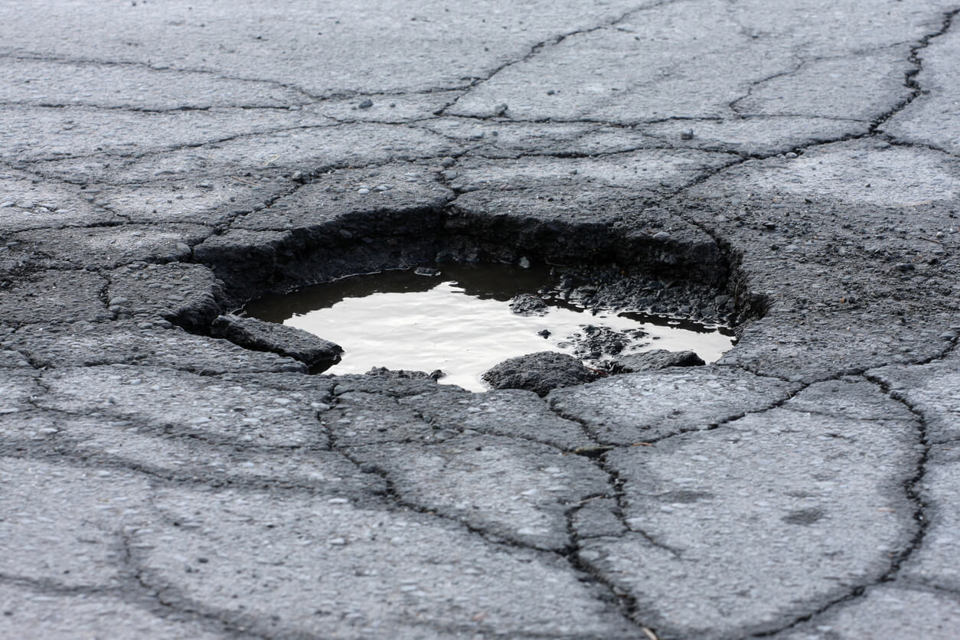Potholes, poor road markings and complicated signals and signs could hamper the development of self-driving cars, new research suggests.
It also questions whether the associated communication and information systems will be up to standard and offer the comprehensive coverage which could be required.
Manufacturers predict that by the start of the next decade there will be a degree of full autonomy, with the car able to take complete control, allowing drivers to carry out other tasks, and by 2025 a car will be able to drive itself from door to door without a driver needing to touch the wheel.
But, while advancements in technology are paving the way for connected and autonomous vehicles (CAVs), the readiness of the road network to facilitate them has been called into question in the report from the RAC Foundation.
A range of roadside communication devices are being considered to supplement vehicle-based devices, sensors and vehicle-to-vehicle communications, for example.
These include communication beacons located at strategic positions which may replace traffic signals, provide vehicle position information and serve a range of other functions. However, there is likely to be a problem with the loss of certain sorts of communication signals (for connectivity) in urban side streets, which could increase the need for a variety of devices and also raise the corresponding cost.
CAVs will also require very detailed maps of the routes being travelled. Filing construction plans which will affect the road network well in advance will be crucial for planning and mapping activities, says the report.
“Driverless cars will make decisions based on their best assessment of their surroundings,” explained Steve Gooding, director of the RAC Foundation. “Throw in variables like potholes, unclear and obscured signs and lines, and intermittent communication coverage from our currently patchy network and you could find that far from offering the swift, comfortable travel we seek, our new autonomous cars are condemned to crawling along in ‘proceed with caution’ mode.”
Little attention has yet been paid to what impact different CAV strategies will have on the condition of road infrastructure, and its maintenance, renewal and configuration requirements, and in particular, the extent to which key features of the infrastructure, such as road signs and markings, will need to be maintained to a higher standard.
But CAVs are unlikely to develop to their fullest potential without advanced planning by transport policymakers, planners and engineers to ensure infrastructure change is adequate, says the report.
Government, it concludes, needs to decide on the level of automation that will be supported, and how this will be implemented. Policy options – such as prioritising the platooning of heavy goods vehicles – have significant implications for infrastructure change and cost. Without clear policy direction, change in road infrastructure will be slow and piecemeal, it says.
The problem for policymakers at the moment is that research on the infrastructure requirements of CAVs is in its infancy, and evidence for the implications of the various automation options is largely lacking.
Experience in other sectors – for example, aviation and rail – suggests that as greater use is made of sophisticated technology, maintenance costs increase significantly. This will need to be taken into account in any planning, but also needs to be considered in the light of the Asphalt Industry Alliance’s finding that local road condition continues to deteriorate, with the recognition that there will be a need for significant investment (Fleet News, March 30).
In the alliance’s Annual Local Authority Road Maintenance (ALARM) survey, it suggested that local authorities need more than £12 billion to be able to bring the network up to scratch.
The shortfall has remained largely unchanged for four years – and the gap between the amount councils received this year and the amount they say they need to keep carriageways in reasonable order is almost £730 million.
The RAC Foundation report suggests that a pothole in a traffic lane carrying vehicles in a platoon, where vehicles follow each other very closely, could be extremely dangerous, particularly at high speed.
A recent report published the House of Lords Science and Technology Committee (fleetnews.co.uk, March 15), highlighted similar concerns to those raised by the RAC Foundation.
It concluded that Highways England and Local Transport Authorities (LTAs) needed to engage with motor manufacturers to future-proof new infrastructure and minimise the likelihood of expensive retrofitting.
The Earl of Selborne, chairman of the committee, said: “Connected and autonomous vehicles is a fast-moving area of technology and the Government has much to do, alongside industry and other partners, to position the UK so that it can take full advantage of the opportunities that CAV offer in different sectors.”
In England, Wales and Scotland, LTAs, which are often local authorities, are responsible for the maintenance and management of the majority of roads.
Around 5% of the road network is under the control of Highways England or the Welsh Assembly Government, while the remaining 95% is the responsibility of more than 140 local authorities of varying size and capability.
Darren Capes, transport systems manager for the City of York Council, said: “Authorities need to understand what supporting connected and autonomous vehicles will mean for the policy and funding decisions that they need to make now.
“They need to understand what technology decisions need to be made as existing highway systems reach the end of their life and new systems are considered.
“They need to do this against a backdrop of pressure to reduce costs and find further efficiencies in delivering services.
“They also need clarity on how the co-ordination of countrywide delivery of connected and autonomous vehicles will be managed between national and local government and the public and private sectors.”
He concluded: “Connectivity and some degree of autonomy is inevitable and will be driven by industry, the motor manufacturers and public demand. However, I feel that most local authorities are not yet sufficiently prepared to deliver it.”




















Login to comment
Comments
No comments have been made yet.